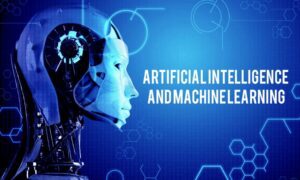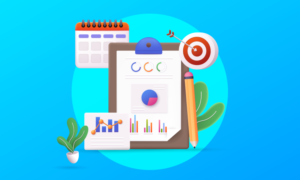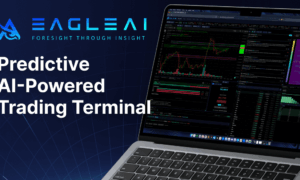Artificial intelligence and machine learning are no longer abstract concepts confined to academic discussions but stand at the core of modern software solutions. Companies across industries rely on them to improve customer experiences, optimise supply chains, and forecast market trends with increasing accuracy. However, one of the most pressing challenges lies in making sense of the complex metrics that emerge from AI and machine learning processes. Gathering and storing data is straightforward, but discovering patterns, measuring performance, and ensuring a model remains reliable require effective visual representation. JavaScript Charts, when integrated properly, provide a versatile tool to illustrate these metrics dynamically and accessibly.
A developer at SciChart, highlights the importance of choosing charting solutions that can handle heavy data throughput without performance lags. He says that advanced metrics demand powerful visualisations that can be rendered efficiently through fast JavaScript charts which empower teams working on AI applications to display and update metrics in real time, allowing data scientists, analysts, and decision-makers to spot shifts before they develop into larger issues.
AI and Machine Learning Metrics
The core principle of AI and machine learning is the creation of algorithms capable of identifying relationships and patterns in data. This data can be anything from user clicks on a website to images captured by drones monitoring crop health in agriculture. For an AI model to deliver accurate predictions, a sophisticated blend of statistics, linear algebra, and calculus lies beneath the surface, guiding how the model learns from input data and adjusts its internal parameters.
Within this realm of complexity, metrics serve as tangible indicators of how well a model is performing. In classification tasks, accuracy, precision, recall, and F1 scores are commonly used to gauge how often a model correctly identifies categories or flags anomalies. In regression tasks, mean squared error and mean absolute error measure how far the model’s predictions deviate from actual values. When delving into more intricate methods, such as deep learning for image recognition or natural language processing, different metrics can come into play, including IoU (Intersection over Union) for object detection or BLEU scores for machine translation tasks.
In essence, metrics translate abstract computational processes into numbers that reflect real-world performance. Even so, raw metrics can be challenging to interpret. They shift over time as a model encounters new data, and subtle anomalies can be overlooked in spreadsheets or static charts. This is where dynamic, interactive visualisations are essential. They bring these raw numbers to life, help viewers spot trends or unusual spikes, and help illustrate underlying relationships. The ability to transform these metrics into actionable insights can be the difference between a successful AI deployment and one that leads to confusion or misdirected efforts.
Why Metrics Matter in AI
Metrics matter because they quantify how well an AI system is learning, adapting, and performing. Data scientists rely on these metrics to guide model improvements. A sudden change in an accuracy score may indicate that a model is overfitting or that it is encountering new data distributions. An unexpected drop in recall might signify that the model is missing critical cases, potentially leading to serious real-world consequences if the application is used in healthcare, fraud detection, or autonomous systems.
Furthermore, stakeholders who might not have deep technical expertise often request a summary of how the AI is functioning. Presenting them with a raw recall or F1 figure might not be enough to demonstrate effectiveness. An interactive chart that shows the model’s progress over time or compares multiple models side by side can be much more illuminating and can foster better decision-making.
Metrics can also pinpoint areas where the training process might be flawed. Observing a persistent gap between training accuracy and validation accuracy could be an indication of overfitting, prompting the team to revisit regularisation techniques or gather more diverse data. By regularly monitoring such metrics through easy-to-interpret charts, development teams are better able to make incremental, data-driven changes to the model.
Dynamic Charts: A Fresh Perspective
Traditional charts have always been valuable when summarising static datasets, but AI and machine learning workflows introduce the need for something more interactive and immediate. Machine learning pipelines rarely remain static. Models are trained, retrained, and fine-tuned as new data arrives. When a pipeline is deployed in a production environment, the models continue to learn or adapt, making real-time performance tracking crucial for timely decision-making.
Dynamic charts respond as data updates occur, creating a visual narrative that unfolds in synchrony with the underlying processes. Rather than waiting until a training run completes to view results, teams can observe metrics in progress. Rather than manually refreshing or generating new plots whenever fresh data arrives, an automated dashboard can visualise the latest figures continuously.
The advantage lies in early detection of anomalies and in a deeper collective understanding. When complicated metrics like recall or F1 shift in real-time, the development team can react promptly, diagnosing potential data drift or adjusting the hyperparameters before a performance drop becomes severe. The dynamic approach thus helps avoid the pitfalls of static reporting, creating a living, breathing representation of model behaviour.
Importance of Real-Time Data Visualisation
AI models are often at the heart of mission-critical systems. In a financial trading context, a model making buying or selling decisions needs to be monitored immediately, as any lag could translate into losses. In healthcare, algorithms that monitor patient vitals or scan medical images for abnormalities must offer accurate performance at all times. If a model experiences concept drift, the ability to catch it early through real-time data visualisation can prevent serious errors.
Such high stakes have led to considerable interest in deploying real-time dashboards that tie into AI pipelines. Metrics update as data flows in, enabling continuous surveillance. A chart that depicts classification accuracy dropping below a set threshold can trigger automated alerts. A line graph showing an unexpectedly high mean squared error can prompt an immediate investigation into potential data contamination or shifting data distributions. This level of vigilance is only achievable when real-time visualisations are in place, emphasising the need for charting libraries that can handle rapid updates without sacrificing performance or clarity.
Leveraging JavaScript for Charting
The popularity of JavaScript for charting is rooted in its ability to work seamlessly within web applications. Modern dashboards and web-based interfaces benefit from high responsiveness and broad accessibility. By leveraging the capabilities of JavaScript in conjunction with frameworks like React or Angular, organisations can create interactive, browser-based data exploration platforms. These platforms are available across devices, operating systems, and locations.
Because of JavaScript’s ubiquity, developers can harness a variety of libraries to display charts, handle user interactions, and process large amounts of data. Many libraries come with pre-built chart types, from line charts for time-series data to scatter plots for comparing multiple metrics at once. Implementing streaming data pipelines is often straightforward, allowing the visual front-end to be updated in near-real time. Additionally, the language’s event-driven nature makes it well suited for interactive elements such as tooltips, zooming, panning, and click-based filtering of data.
Another advantage lies in the wide community support. JavaScript developers around the world share plugins, modules, and tips that can help solve specific visualisation challenges. As AI and machine learning grow in complexity, communities often produce custom components for advanced chart types, further reducing development time. It is also relatively simple to integrate a JavaScript charting library with back-end AI services, especially if the latter expose metrics through RESTful APIs or streaming protocols like WebSockets.
Challenges in AI Metric Visualisation
Despite the advantages of dynamic charts, visualising AI metrics comes with notable challenges. A chief hurdle is data volume. Deep learning models or complex ensemble methods can generate vast streams of metrics, especially during extended training sessions. Handling large volumes of data on the client side can become overwhelming, making performance optimisations crucial.
Some metrics also require more advanced visualisation techniques. For instance, confusion matrices are vital in classification tasks, but they are not always easy to implement dynamically. Heatmaps, scatter plots with dynamic clustering, or custom interactive tools may be necessary to convey the nuances of these data structures. This adds a layer of complexity to charting strategies and demands a library or custom implementation flexible enough to handle these needs.
Interpretation poses another challenge. AI metrics are not always straightforward, and different stakeholders have varying levels of data literacy. While the data science team might want to see a multi-axis chart showing half a dozen metrics simultaneously, executives may prefer a single figure that summarises performance. Balancing depth and accessibility is essential. A well-designed dashboard might offer default views for high-level summaries, with the option to dive deeper into specific metrics for those who have the technical background.
Ensuring Readability and Interactivity
Readability and interactivity are vital to a successful metric dashboard. A chart that is too cluttered can obscure patterns instead of revealing them, leaving the audience with more questions than answers. Each chart should be purposeful. If multiple metrics appear on a single graph, it should be clear how they relate to each other and how to interpret them in tandem.
Interactivity takes this further by allowing the user to highlight certain data points, filter out extraneous noise, or focus on a specific timeframe. For example, if a model’s recall is of particular interest in a healthcare context, a user could click on a legend element to isolate recall and hide other metrics. Interactive features like hover-over tooltips can provide precise numeric values and additional context without overwhelming the chart’s main view.
Well-chosen colour schemes, consistent labelling, and smooth animations can enhance understanding. Animations should not be merely decorative; they can help illustrate data changes over time if done with care. On the other hand, jarring transitions or an overload of visual effects can detract from usability. The balance comes from a thoughtful UI/UX design process that puts the viewer’s experience at the centre.
How Real-Time Dashboards Enhance Decision Making
Real-time dashboards transform abstract AI processes into actionable insights. They allow teams to make decisions based on the latest data instead of relying on static reports generated hours or days earlier. In sectors like e-commerce, where user behaviour can shift rapidly, up-to-date metrics can mean the difference between effectively capitalising on a surge in demand and missing an opportunity entirely.
Decisions in AI projects often revolve around model tuning. A spike in a particular metric can indicate a break in the underlying data pipeline, prompting a quick fix before the impact spreads. In some cases, business logic relies heavily on model outputs. Real-time dashboards show whether a model is encountering unusual data patterns, enabling operators to intervene manually or automate an appropriate response.
Furthermore, real-time dashboards help build trust in AI systems. Decision-makers are more willing to rely on AI outputs if they can easily access performance metrics and see that a robust monitoring framework is in place. Confidence in an AI model’s predictions grows when the underlying metrics are transparent, regularly updated, and user-friendly.
Bringing React into the Mix
React has emerged as a popular framework for building user interfaces. Its component-based structure and efficient rendering of UI elements make it well suited for constructing sophisticated, dynamic chart dashboards. By breaking down the interface into reusable components, developers can build each chart, filter, or control panel in isolation, ensuring that changes in one part of the dashboard do not unintentionally affect others.
Through React’s virtual DOM mechanism, the user sees updates occur smoothly as data streams in. Components can be tailored to fetch data at set intervals or listen for push notifications from a back-end service, re-rendering only when necessary. This efficiency helps keep the interface responsive and reduces flicker, which can be particularly beneficial when tracking metrics that change multiple times a second.
Developers might also pair React with state management libraries like Redux or Recoil to handle complex interactions within the dashboard. When implementing real-time dashboards with numerous charts, having a central store for data and state can help prevent inconsistencies or duplication. This approach streamlines data flow and ensures each visual element accurately reflects the latest numbers.
Data Streaming Protocols for AI Dashboards
Constructing a fully dynamic, real-time dashboard calls for a data stream that updates charts as new information arrives. Various streaming protocols can be used to achieve this, the simplest being periodic polling. A React component might request fresh metric data every few seconds, updating the chart accordingly. However, polling is not always the most efficient approach, particularly when data must be updated instantly or at scale.
WebSockets are an alternative, enabling continuous, bi-directional communication between server and client. When metrics change, the server pushes new data to the client, which immediately updates the chart. This method is particularly effective when near-instant feedback is required, such as in financial systems or real-time monitoring of AI-based robotics.
Where security and reliability are of paramount concern, protocols like MQTT (Message Queuing Telemetry Transport) could be used. MQTT is commonly employed in IoT environments where devices broadcast sensor data. If an AI system is embedded in an industrial setting, MQTT can stream metrics from multiple sensors and analysis nodes. The visualisation layer then aggregates, processes, and renders these metrics, helping operators detect anomalies in equipment or product lines.
Scalability in Large AI Deployments
As AI deployments grow, so do the demands on the metric visualisation system. In large organisations, multiple teams may be training separate models for various use cases, each producing its own metrics. Over time, the volume of metrics can multiply. A single training run might generate losses, gradients, or other data for tens of millions of parameters, especially in deep learning contexts.
Designing a scalable dashboard means ensuring it can handle large datasets and many concurrent viewers without performance bottlenecks. The server infrastructure must be robust enough to gather, process, and distribute metric updates. Using a microservices approach, each AI pipeline might publish its metrics to a central broker or database. The charting front-end then subscribes to the relevant streams, rendering them in a way that is both performant and visually clear.
Client-side optimisations include data downsampling, where the system only renders the most relevant points at a given time scale. For historical views, it might display summarised versions of metrics, switching to a more granular view on demand. This approach allows the dashboard to remain responsive, even under heavy load. With careful planning, it can accommodate rapid organisational growth in AI initiatives without needing frequent overhauls.
Security and Privacy Considerations
AI models can expose sensitive information if not handled carefully. The metrics themselves might reveal patterns about underlying data, especially in medical, financial, or governmental contexts. A chart displaying an unusually high error rate for a specific region might indirectly expose details about individuals, particularly if the dataset is small or the region is narrow.
When setting up an AI metric dashboard, data security is critical. The pipeline should enforce access controls, ensuring only authorised individuals or teams can view certain metrics. Encryption in transit (such as using HTTPS or secure WebSocket connections) is a given in sensitive environments. Securely storing historical metric data also becomes essential, since logs might be used to reconstruct confidential information if they fall into the wrong hands.
Anonymisation techniques can be beneficial for some dashboards, removing or obscuring personally identifiable details. For example, instead of charting metrics by individual user ID, data could be aggregated at a higher level. However, striking a balance between utility and privacy can be challenging. Too much aggregation may reduce the dashboard’s diagnostic power, while too little could risk exposing sensitive data. Thorough planning, in collaboration with privacy and security experts, helps ensure that dynamic charts provide their insights without compromising personal or proprietary information.
Automating Alerts and Notifications
Visual dashboards are extremely helpful, but they also rely on users proactively checking them. The next step is to incorporate automated alerts that trigger when certain thresholds or patterns appear. By defining acceptable ranges for metrics such as accuracy or loss, the system can notify relevant parties if values drift outside these bounds.
Alerts may come in various forms, such as emails, text messages, or messages posted to a team collaboration platform. By linking alerts to real-time dashboards, the moment a user receives a notification about unusual metrics, they can open the dashboard to see a live, detailed view. This approach reduces response times and encourages proactive issue resolution.
Machine learning itself can be used to refine alert mechanisms. Instead of fixed thresholds, anomaly detection algorithms can analyse historical metric data, learning normal patterns and flagging significant deviations. When integrated with interactive charts, the result is a powerful system that not only visualises AI metrics but also pinpoints unusual behaviour in sophisticated ways, helping data scientists investigate problems efficiently.
Future of AI Metrics
As AI continues to evolve, so too will the metrics used to evaluate and explain models. In fields like deep reinforcement learning, new metrics might measure not just accuracy but also adaptability, exploration, or multi-agent interaction. Interpretability is also a growing concern, prompting the development of metrics that quantify how transparent or explainable a model’s decisions are. These emerging areas create a need for chart types and interactive features that can reflect complex relationships in an easily interpretable format.
Advanced visualisations might offer 3D or even VR-based experiences for highly multidimensional data, though these remain niche at present. More immediate is the integration of natural language processing within the dashboard itself, where a user can type queries like “Show me models with increasing error in the last three hours” and receive not just text-based results but a dynamic chart in direct response.
Edge computing solutions also bring fresh challenges. AI models are increasingly deployed on devices with limited processing power or intermittent connectivity. Capturing and streaming metrics from such devices in real time requires lightweight, efficient communication protocols. The dashboards of tomorrow may aggregate data from countless edge devices, each contributing a small slice of a larger intelligence network.
Practical Applications Across Industries
The true value of dynamic AI charts becomes clear when exploring practical applications. In manufacturing, predictive maintenance algorithms analyse sensor data from machinery, producing metrics on the likelihood of component failure. A real-time chart showing a rising probability could trigger preventative maintenance, saving both time and money.
In retail, recommendation engines use machine learning to suggest products. These engines track metrics like click-through rates, conversion rates, and user satisfaction scores. A dynamic chart that highlights a sudden drop might reveal a bug in the recommendation logic or a shift in user behaviour. Swift corrective action can restore performance and preserve sales.
Healthcare applications benefit profoundly, as doctors and specialists can view real-time metrics from AI diagnostic tools. If an algorithm that classifies tumour images starts to display a dip in accuracy, immediate investigations can be conducted. Transparent, interactive dashboards also foster trust, enabling medical professionals to validate results more confidently before making critical decisions.
Continuous Improvement and Iteration
One of the main advantages of using real-time, interactive dashboards is the facilitation of continuous improvement. Data science is an iterative process, where each new data point or training session offers insights that guide the next stage of development. The visual nature of charts simplifies the comparison of different model versions, highlighting which changes led to performance gains and which introduced new errors.
Users can overlay historical metrics on current ones, quickly spotting improvements or regressions. When combined with robust version control and metadata, it becomes easier to attribute changes to specific hyperparameters, architectural adjustments, or data augmentations. This cyclical process of experimentation, observation, and iteration often leads to breakthroughs that static reports alone might never expose.
Conclusion
The world of AI and machine learning is replete with valuable metrics that inform us about a model’s health, reliability, and scope of applicability. These metrics guide decisions across industries, from healthcare to finance, ensuring that complex automated systems remain both effective and accountable. Dynamic, interactive charts have emerged as powerful tools for transforming raw data into comprehensible insights, particularly when they are rendered using flexible, widely supported technologies such as JavaScript.
When done correctly, JavaScript Charts can illuminate patterns and anomalies in a manner accessible to experts and non-experts alike, bridging gaps between technical teams and decision-makers. Real-time dashboards enhance proactive, data-driven responses, capturing issues before they spiral out of control and capitalising on opportunities at their most relevant moments. Through thoughtful design, robust integrations, and a keen awareness of performance challenges, these dashboards serve as a natural extension of modern AI pipelines.
As new metrics develop and existing ones become increasingly multifaceted, dynamic charting will remain at the forefront of effective AI communication. It is through this blend of real-time data visualisation, smart alerting, and community-driven technological advancement that the next generation of AI systems will become even more transparent, agile, and accurate. By embracing these tools and refining best practices, organisations can ensure that the growth of AI is matched by equally sophisticated, user-friendly methods of understanding it.



































